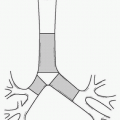To maintain an American Board of Radiology (ABR) certificate, radiologists are required to complete parts I to
IV of the Maintenance of Certificate (MOC). Part I, Professional Standing, requires the possession of an unrestricted medical license. Part
II, Lifelong Learning and Self-Assessment, requires the credits for continuing medical education (CME) each year. Part III, Cognitive Expertise, requires passing an examination with several selected modules in clinical skills and one module, which is designated by the ABR testing as noninterpretative skills.
Part
IV, Practice Quality Improvement (PQI), needs the completion of PQI projects. The number of required PQI projects to be completed was defined for the 10-year MOC cycle and is dependent on the starting date. Candidates must complete at least one PQI project in the previous 3 years. Note that continuous certification began with certificates issued after 2012 and therefore affects all current radiology residents.
PQI projects can be accomplished as an individual, a group, or an institutional/organizational level (
1). This chapter can be used as a guide to fulfill the practice quality improvement (QI) requirement in interventional radiology.
Individual PQI Projects
In some settings, one may not be able to perform PQI as a group or may have subspecialty PQI requirements that are not shared by practice associates. In these situations, individual PQI participation is appropriate.
Individual PQI projects may be sponsored or self-designed.
Sponsored PQI projects, including registries, may be performed by individuals or groups. Sponsored projects are often concerned in significant, common radiologic care issues. These projects have role in improving practice and also an understanding the effects of QI efforts on a national level. Examples include
“RADPEER,” “Dose Index Registry,” “General Radiology Improvement Database,” or “
CT Colonography Registry” (
Table e-98.1).
Self-designed projects are suited for individual PQI participants. Such projects do not require approval for use; however, certain rules in construction and execution of these projects must be followed. Although these projects are self-designed, documentation with record keeping is necessary. Examples include “optimizing radiation use during fluoroscopic procedures” or “reducing door-to-puncture times for intra-arterial stroke therapy.”
The following presents a step-by-step process for project selection, development, and completion, the PDSA cycle, which is continued until the project is concluded (
2).
Baseline PDSA Cycle (Cycle No. 1)
1. Plan. Determine the area of interest that you consider to be in need of and have the potential for improvement, which is relevant to your practice and amenable to repeated measurements. Topic should be challenging and address the existing gaps in your practice. You can consider improving your own interventional radiology practice to a safer, timelier, more efficient, more effective, more patient-centered, or more equitable practice.
Then devise an appropriate measure to gauge the issue you have selected. Set a desired level of performance in your practice. Note if you predict that your goal will be met on initial measurement, this might not be considered as suitable topic for a QI project. Then devise a plan or process for collecting the data (
Table e-98.2).
2. Do
3. Study. Assess your baseline data and compare the data with both the predicted result and the desired target. If the results did not meet your performance goal, determine root causes and factors, which you attribute the results. The team needs to retrospectively investigate the problem and explore all possible causes until the true root cause can be established. After identifying the root cause, attempts are made to identify corrective measures. However, if the results met the desired performance level, institute a plan to sustain the gain and remeasure at appropriate intervals.
4. Act. Consider what can be done to address the root causes for not achieving the performance target. Implement your improvement plan before remeasurement (
Table e-98.3).
Post-PQI Project PDSA Cycle (Cycle No. 2)
Apply the improvement plan and repeat the cycle. Set the new measurements in an appropriate number of cases/data points and analyze the remeasurement data. Determine whether the project goal has been met or whether additional action is needed. The PDSA cycle can be repeated until the goal is met or until an end point is otherwise determined. If you reached your desired goal, make the improvement process routine and perform intermittent PDSA cycle to sustain the improvement.
Group PQI Projects
Based on the ABR, the group is defined as “Two or more diagnostic radiologists, radiation oncologists, or medical physicists of the same or different disciplines, sharing a common central organizational structure, who work together to provide patient care, regardless of individual contractual affiliations or relationships. These diagnostic radiologists, radiation oncologists, or medical physicists may provide services at single or multiple facilities or locations in a variety of clinical settings, including hospitals, offices, or patient-imaging centers.”






